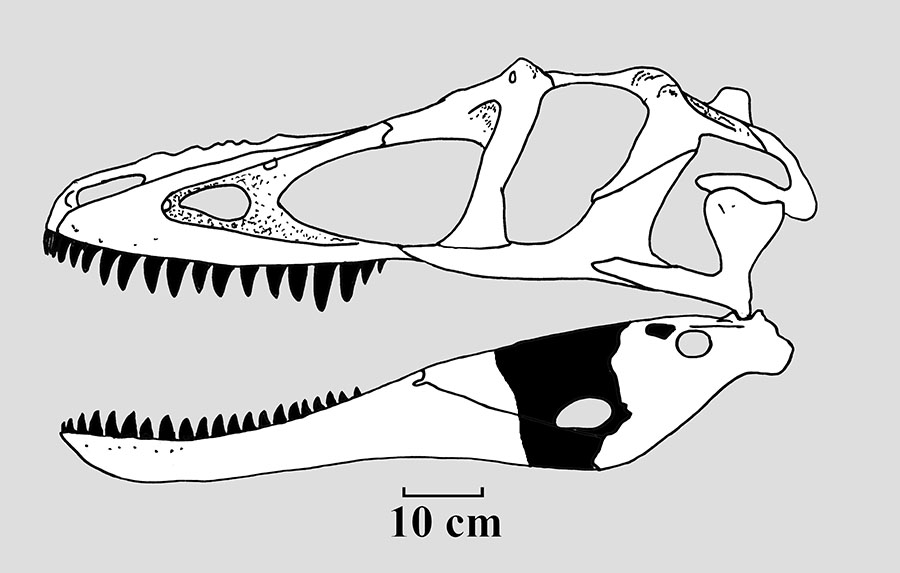
Genus: Qianzhousaurus LÜ, YI, BRUSATTE, YANG, LI & CHEN,
2014
Etymology: Qianzhou, an ancient name of Ganzhou, Jiangxi Province, China, where the fossils were discovered,
and Greek, sauros, "lizard."
Species:
sinensis LÜ,
YI,
BRUSATTE,
YANG,
LI & CHEN,
2014
Etymology: Greek, sin, "China": refers to the specimen found from China.
Holotype: GM F1004
Locality: Longling Town, Ganzhou City, Jiangxi Province, China.
Horizon: Nanxiong Formation.
Biostratigraphy:
Age: Maastrichtian Stage, Uppermost Senonian Subepoch, Uppermost Gulf Epoch, Late Cretaceous.
Material: Skull and fragmentary skeleton.
Breakdown as follows:
GM F1004-1: A nearly complete skull and most of the left lower jaw.
GM F1004-2: 9 cervical vertebrae.
GM F1004-3: 3 anterior dorsal vertebrae.
GM F1004-4: 18 middle posterior caudal vertebrae.
GM F1004-5: A complete right scapulocoracoid.
GM F1004-6: Part of the left scapulocoracoid.
GM F1004-7, 8: Both partial ilia, a left femur and left tibia, a left partial fibula, a left astragalus and calcaneum and left metatarsals.

Qianzhousaurus sinensis LÜ, YI, BRUSATTE, YANG, LI & CHEN, 2014, Holotype: GM F1004.